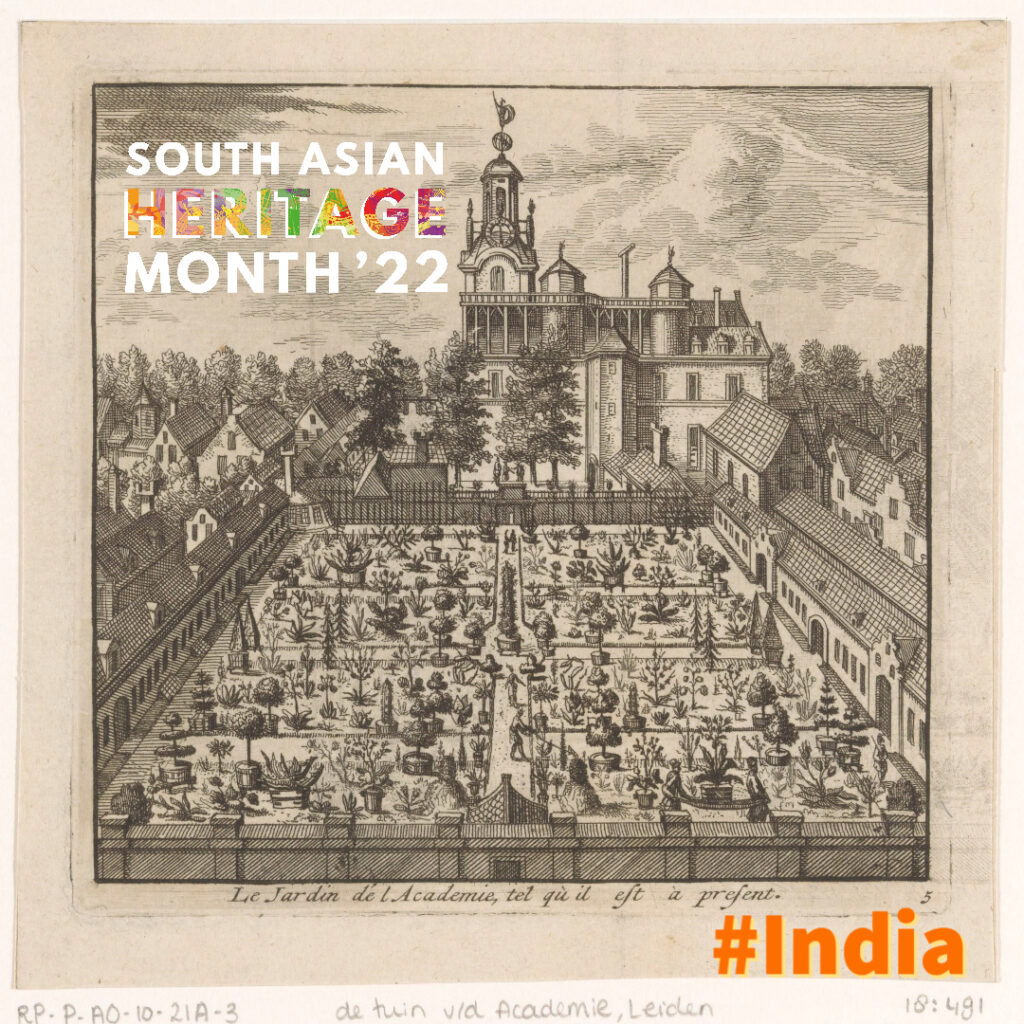This article about turmeric is part of a series to mark South Asian History Month by exploring this year’s theme ‘Journeys Of Empire’ through plant and horticultural history. Turmeric (Curcuma longa) is the root of a plant in the ginger family, grown for its earthy flavour, yellow colour and apparent health-giving properties.
It is unknown in the wild and was probably domesticated thousands of years ago in India, and long used as a herb in traditional Ayurvedic medicine, said to heal wounds and cure digestive problems, as well as a sacred colourant in many Buddhist and Hindu ceremonies and rituals. Its distinctive features made it popular with traders and it reached at least the eastern parts of the Roman empire, as it is mentioned by first-century Greek botanist and physician Dioscorides in his herbal De Materia Medica.
Turmeric brought to Europe by colonisers
Waves of European colonisers – Portuguese, Dutch and British – sought to exploit the commercial possibilities of Indian botanical products, particularly seeking new medicines and exotic trophies. By the early 17th century, the Dutch East India Company, a vastly profitable private concern, was establishing a stranglehold on the international spice trade, bringing turmeric and a range of other products to European markets.

Turmeric root became a familiar sight in Britain. In the 1730s the Scottish amateur botanist and illustrator Elizabeth Blackwell included ‘turmerick’ in her extraordinary A Curious Herbal – 500 illustrations of medicinal plants that she drew, engraved and coloured by hand, all done to fund her ne’er-do-well husband’s release from a London debtor’s prison. She drew the turmeric roots from what was on sale ‘in ye shops’. The flowers and leaves were copied from a specimen she acquired from Hortus Botanicus, the botanical garden in Leiden, the Netherlands, where indigenous Indian medicinal garden plots were recreated with specimens imported by the Dutch East India Company.
Turmeric used in cookery and medicine
Other evidence exists of turmeric’s popularity in 18th century England. A hand-written recipe book, probably produced in Yorkshire around 1750 and now held in the Folger Library in Washington DC, includes instructions for a Portuguese chicken soup served with rice ‘half white and half coloured with Turmiric.’ The root was also used to colour pickled melons, to make them seem like mangoes, allowing ‘participation in the Empire through food’ for those who had not travelled to India, according to food historian Julia Fine.
A more recent example of Western appropriation of turmeric occurred in the US when, in 1995, researchers patented the use of turmeric powder to treat wounds. The patent was successfully challenged by the Indian government, on the basis that the use of turmeric in this way was a traditional remedy used for centuries rather than a novel treatment devised in the West.
Turmeric is still commercially grown in India in large quantities, especially in the southern state of Tamil Nadu; around 80% of the world’s supply of turmeric comes from India. It remains a standard ingredient today in British kitchens, and the plant is occasionally grown here in small quantities, although it requires minimum temperatures of 20C to flourish.
Written and researched by Jill Sinclair
For more information see:
Article about the Plant Humanities Initiative
‘Indian botanicals and heritage wars’ by Sita Reddy on the Wellcome Collection site.
Other articles in this series:



